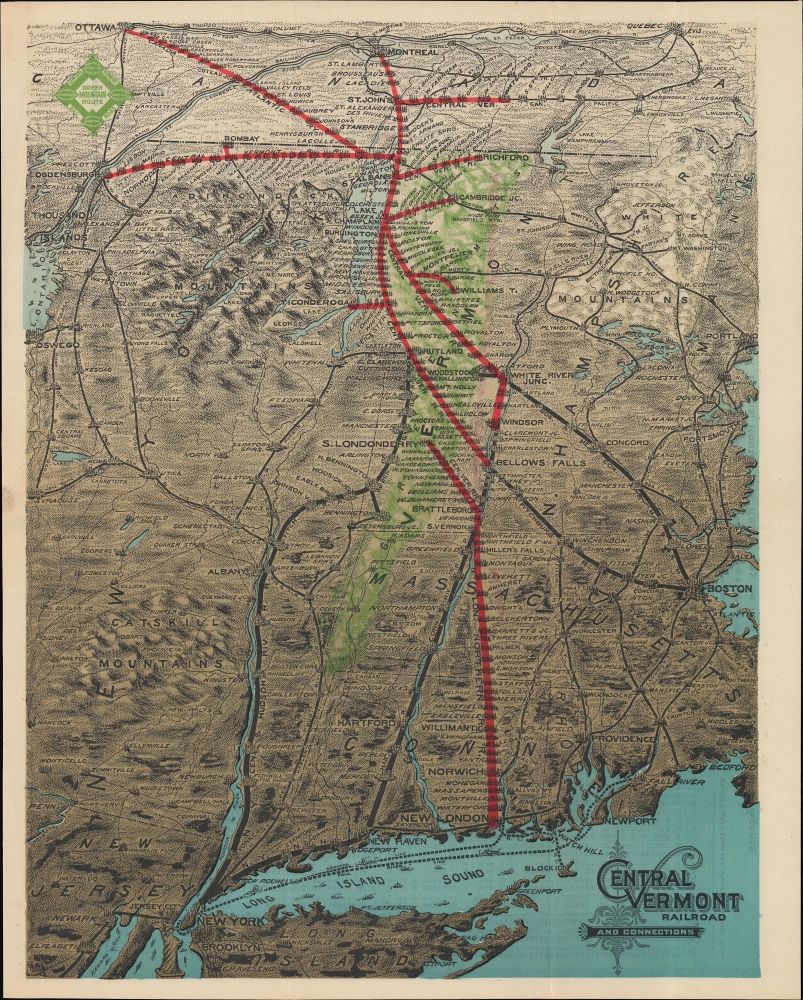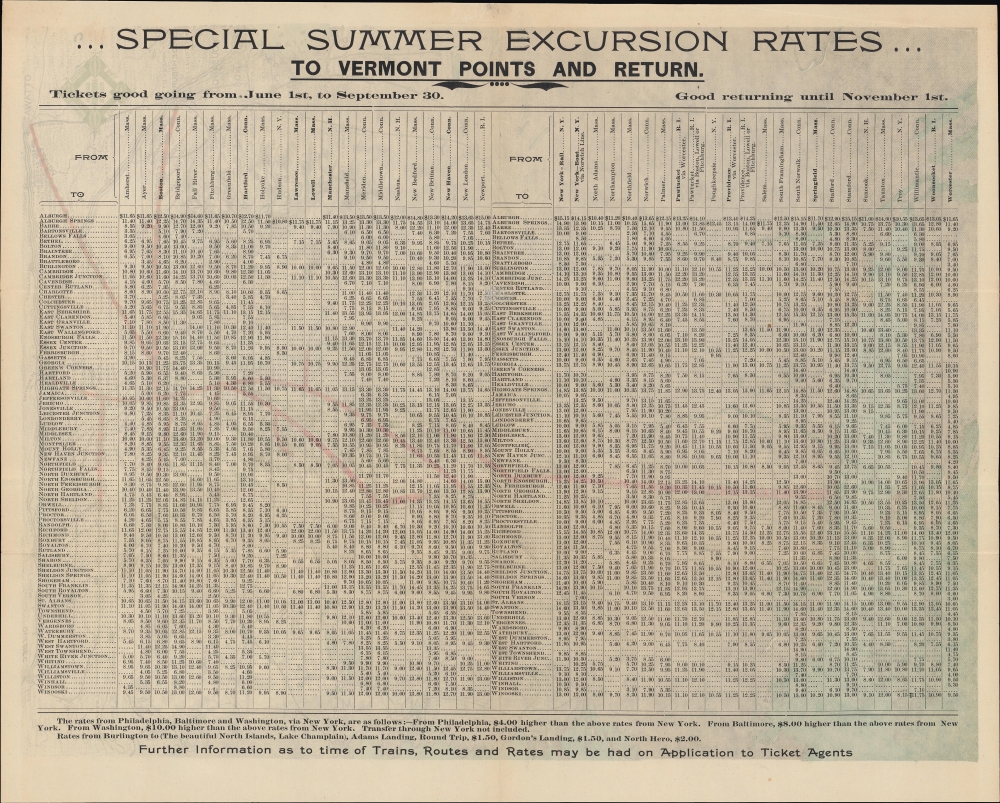1890 View of the Central Vermont Railroad
CentralVermontRR-unknown-1890$350.00

Title
Central Vermont Railroad and Connections.
1890 (undated) 15.75 x 12 in (40.005 x 30.48 cm)
1890 (undated) 15.75 x 12 in (40.005 x 30.48 cm)
Description
A beautiful c. 1890 chromolithographed view of New England and part of Quebec highlighting the routes of the Central Vermont Railroad.
The verso includes a highly detailed table of summertime 'excursion rate' fares between various points, including as far as Boston, New Haven, and New York City. This table indicates that the view was intended for seasonal tourists from these large coastal cities seeking escape from urban grime. Before the widespread adoption of automobiles, railways like the Central Vermont were the primary means for tourists to access the the Green and White Mountains.
A Closer Look
Looking north, this view covers much of Upstate New York, New England, and portions of Canada, with New York City and Long Islands in the foreground. The main lines and subsidiaries of the Central Vermont Railroad are traced in bold red lines, with cities illustrated and stations noted. Connecting lines belonging to other railways, which offered service to Boston, New York City, and Portland, Maine, are traced in black. Making full use of chromolithography, land and sea are shaded in vibrant color, as are the Green Mountains and White Mountains, appropriately shaded green and white, respectively.The verso includes a highly detailed table of summertime 'excursion rate' fares between various points, including as far as Boston, New Haven, and New York City. This table indicates that the view was intended for seasonal tourists from these large coastal cities seeking escape from urban grime. Before the widespread adoption of automobiles, railways like the Central Vermont were the primary means for tourists to access the the Green and White Mountains.
The Central Vermont Railroad
The Vermont Central Railroad was the state's first railroad, chartered in 1843 to connect Burlington with Montpelier, Connecticut River, and the New Hampshire border at White River Junction. Work began in 1846, with the line opened in stages, becoming fully operational in 1849. The company expanded in the following years, acquiring several other lines, eventually reaching into Canada, connecting Montreal and Ottawa with New London, Connecticut. In 1872, the name changed to Central Vermont Railroad, flipping the first two words of the company's original name. In the years following this map's publication, the company ran into financial difficulties and was reorganized several times, with portions coming under the control of the Grand Trunk Railway and Canadian National Railway. The Central Vermont continued to operate somewhat independently under the Canadian National until the former was privatized in 1995. Still, portions of it continue to operate, especially the New England Central Railroad, a freight line maintaining the connection between New London and Vermont cities and towns along Lake Champlain.Chromolithography
Chromolithography, sometimes called oleography, is a color lithographic technique developed in the mid-19th century. The process uses multiple lithographic stones, one for each color, to yield a rich composite effect. Generally, a chromolithograph begins with a black basecoat upon which subsequent colors are layered. Some chromolithographs used 30 or more separate lithographic stones to achieve the desired effect, and chromolithograph color can be blended for even more dramatic results. The process became popular in the late 19th and early 20th centuries when it emerged as the dominant method of color printing. The vivid color chromolithography made it exceptionally effective for advertising and propaganda.Publication History and Census
This view contains no publication information, but from context (including the name of the company and the inclusion of the branch line to Cambridge Junction, completed 1889), it can be tentatively dated to around 1890. A map with this title appears in the OCLC (1131375451) among the holdings of the Université Laval but is noted as being published by the American Banknote Co., suggesting that it perhaps represents a later edition. Regardless of edition, we are unaware of any instances of this map coming to market in recent years.Condition
Very good. Light wear along original folds. Small tear professionally repaired. Text on verso.
References
OCLC 1131375451 (possible later edition).




